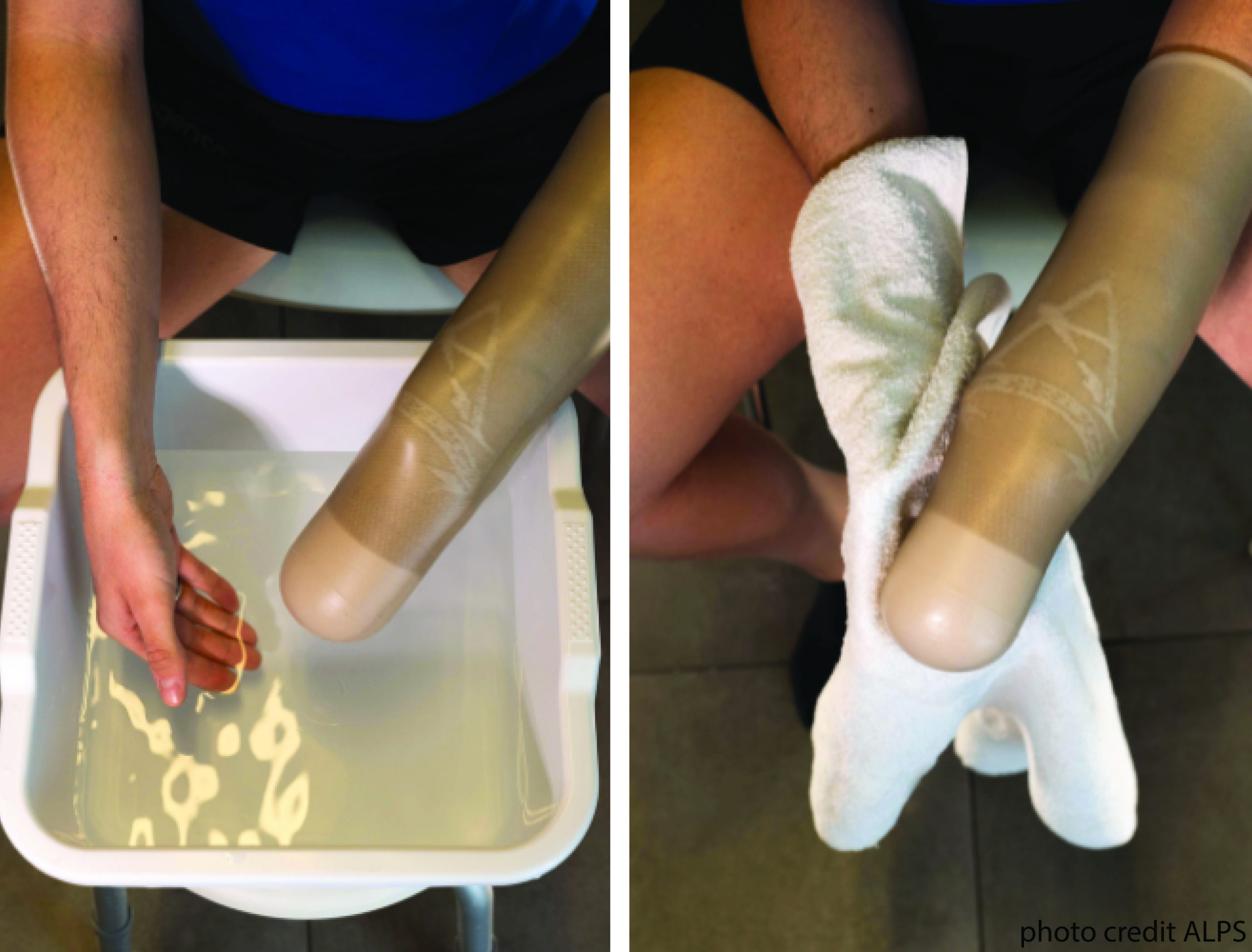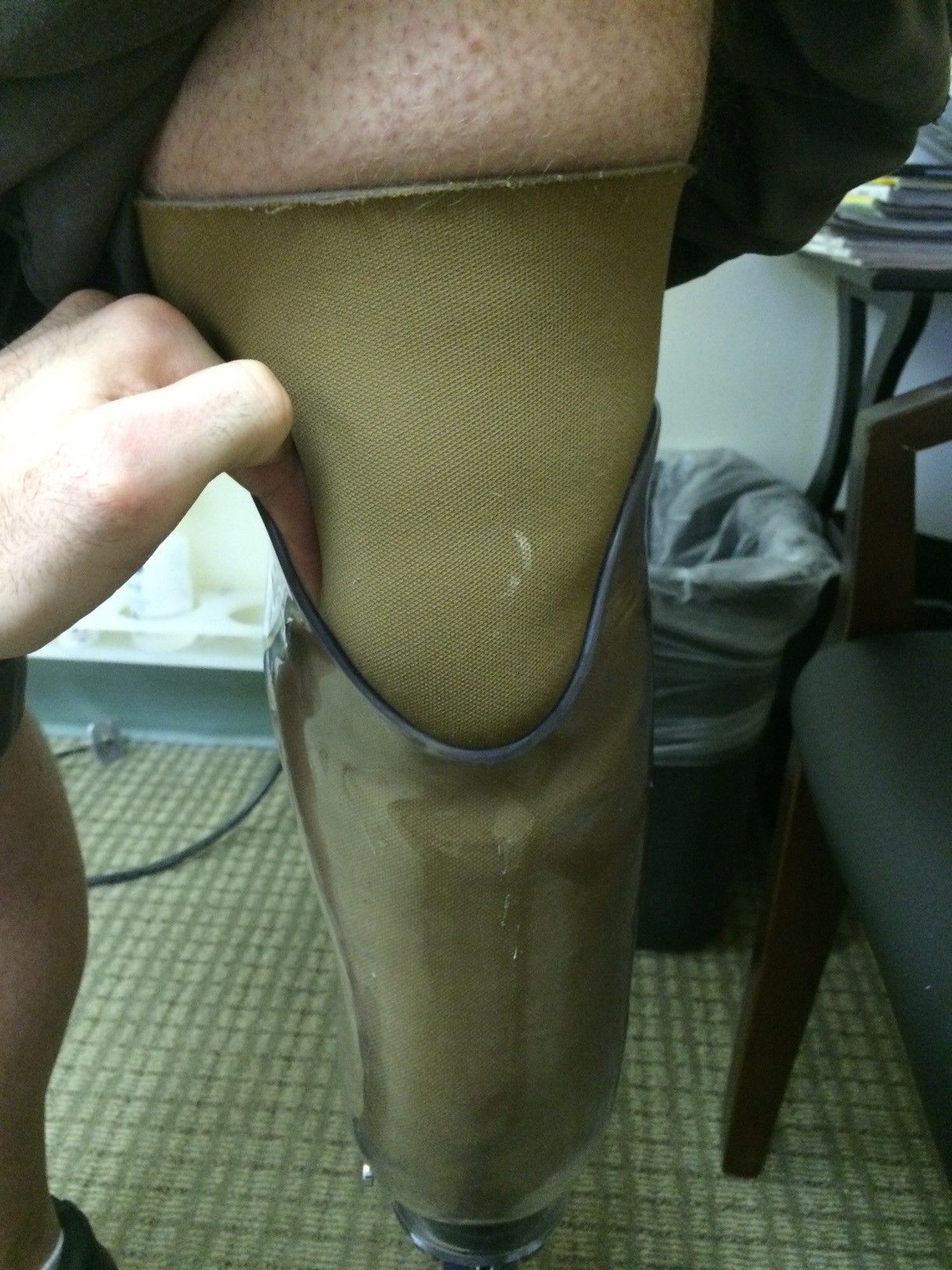It’s safe to say that your prosthesis was an investment — not only financially, but also physically and mentally. From preparing for a prosthetic and going to fittings, to learning how to properly and regularly use your new limb, you worked hard. Consistent maintenance of your residual limb, and the equipment that accompanies it, will ensure your hard work paid off with healthy skin and a liner to use for years to come.
A care routine is best developed at night, which is good news for those who find themselves in a rush in the mornings. It is recommended that amputees shower at night. Hot water can cause the residual limb to swell, making donning a prosthesis more difficult after a warm shower.

How to Care for Your Residual Limb
After your daily shower, be sure to clean your residual limb with warm water and mild soap. Grab a washcloth and scrub gently, paying special attention to the back of your knees and the bottom of your limb. Apply moisturizer recommended by your prosthetist right before you go to bed.
You should also inspect all parts of your limb every day with a mirror. The skin around your residual limb is fragile, and you should notify your prosthetist of any sores, wounds, or other skin abrasions you see.

Liner Care
Like your residual limb needs to be washed every day, your liner should be cleaned every day. A liner is best washed by turning it inside out, washing with mild soap, drying it, and returning it to its original form. The liner should be hung overnight to dry thoroughly.
Water and Prosthetics Do Not Mix
While your residual limb and liner can get wet, your prosthesis should not. Most prostheses will not be harmed with the occasional raindrops or muddy puddle, but they should not be immersed into water unless they are designed for swimming or showering. If your prosthesis accidentally gets wet, dry it off as soon as possible.
An Important Note
If you are experiencing pain or noticing rashes, bruises, open wounds, blisters, or sores on your residual limb skin, you should visit your prosthetist and/or physician immediately. It’s possible your prothesis needs adjusting and it’s best to address issues sooner rather than later.
For more information about prosthetics and how to keep yourself and your equipment healthy, visit leimkuehleroandp.com.